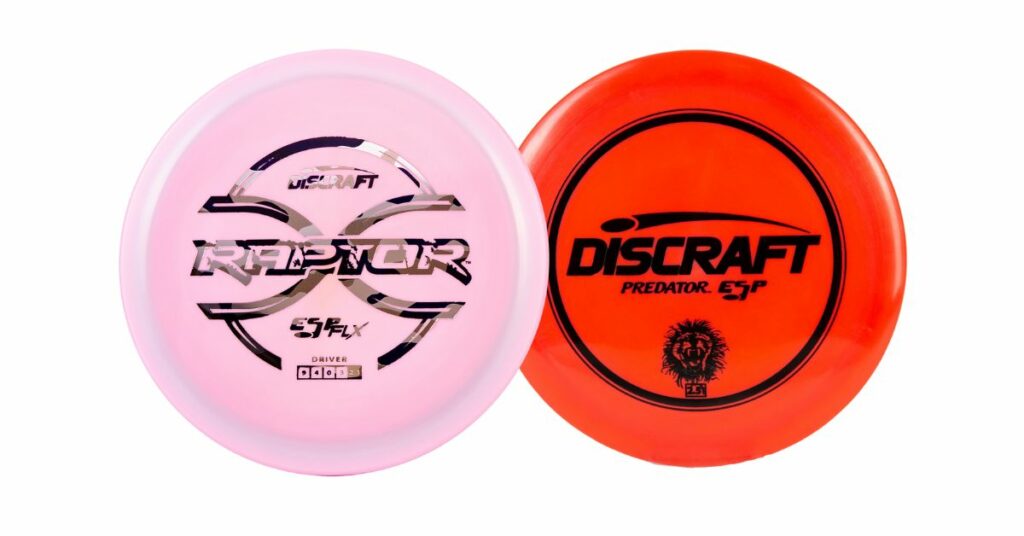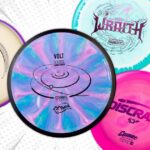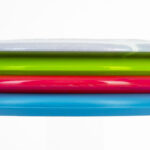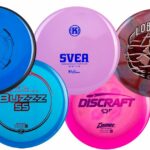If you were to ask a disc golfer what disc they throw the most, many would tell you it is their overstable fairway driver. This is because they are predictable and versatile, making them ideal for distinctive styles of shots to help round out your game.
Discraft is one of the biggest disc companies in the world. Today, we’ll look at the Predator and the Raptor, two of their most popular control drivers.
Before we get into this article, let’s define what a control driver is. A control driver is a 6 to 9-speed disc that offers ultimate control while netting a similar amount of distance to a distance driver. These drivers are so deeply loved by the disc golf community for their dependability and accuracy.
Overstable control drivers are even more popular because they can be well-equipped for all types of shots. These discs make great utility and approach discs for all levels of players.
Let’s break down the flight numbers and characteristics of both discs!
Flight Numbers
Discraft classifies the Predator as a Speed: 9.0, Glide: 4.0., Turn: 1, and Fade: 4.0, making it quite an overstable driver for all levels of players. This disc would be most helpful in extremely windy conditions where flight predictability is difficult to determine or during scramble opportunities where creativity is needed.
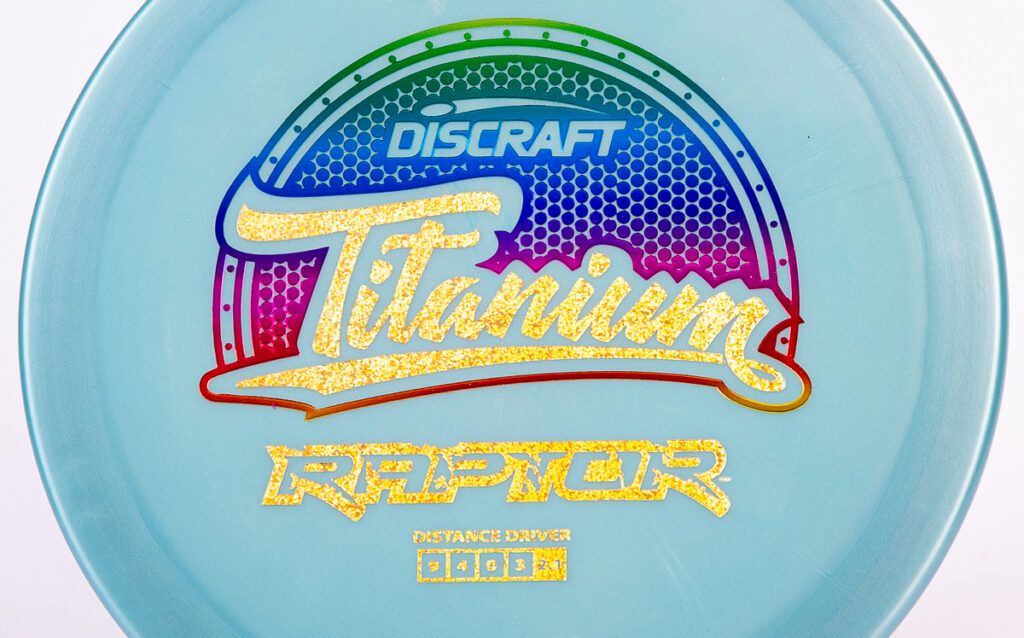
The Raptor’s flight numbers are Speed: 9.0, Glide 4.0, Turn: 0, and Fade: 3.0, marginally decreasing its overstability. Again, this makes it well-equipped to fight through windy conditions and reliably produce fade at the end of your shots.
The Raptor has a more traditional overstable finish that likes to finish on a skipping hyzer angle, while the Predator will push further than its competitor before dumping on hyzer.
Read Next: How Do Disc Golf Ratings Work?
Both discs were made with similar intent, meaning they will fly very similarly. For an advanced-level player, if thrown with power on a flat flight path, the discs will fly straight for a few hundred feet before fading hard with a reliable skip. However, for players just beginning, these over-stable drivers will require lots of torque and anhyzer to angle to get a significant amount distance.
The main difference between these two is the amount of fade and distance present. The Raptor was made as a zero-turn, windy condition disc and will fly shorter distances than its competitor. On the other hand, the Predator has a turn rating of one, meaning it will turn slightly before finishing on a strong hyzer angle. This will allow you to get more distance and shape more advanced shots like hyzer flips and slow panning turnovers.
Now that we’ve discussed how these discs fly, let’s get into their dimensions and hand feel.
Dimensions
Predator vs Raptor
Diameter: 21.2 cm Diameter: 21.3 cm
Height: 1.9 cm Height: 1.9 cm
Rim Depth: 1.1 cm Rim Depth: 1.1 cm
Rim Width: 1.9 cm Rim Width: 1.9 cm
Max Weight: 177.00 g Max Weight: 180.00 g
Since these drivers are almost identical, much of their difference will come down to personal rim preference.
Design
Rim:
After getting my hands on a Predator for the first time, I noticed that it has incredibly sharp edges that feel like a microbead. This could cause some severe problems for forehand or overhand shots that require a smooth release. This disc is surprisingly deep for a fairway driver, which may turn away some players.
On the other side of the millimeter-tall fence, the Raptor is the complete opposite regarding hand feel. It has a clean, comfortable rim that golfers describe as lip-like and moderate. Unlike the Predator, this would make it ideal for forehand and overhand shots because the disc would release cleanly out of your hand. Additionally, the Raptor feels fantastic for backhand shots but may tend to slip out early due to its sleeker design.
Don’t just take my word for it; check out these videos by one of the best disc golf pros Drew Gibson and Trevor from Foundation Disc Golf breaking down the discs’ hand feel and flight characteristics.
Plastic Options:
Predator:
Predators have been around since the early 2000s, so there have been runs in certain plastics that are not readily available. We are going to be looking at the three most sold plastic types today, which include:
Z Plastic: The most durable and over-stable of the three plastics. Predators in this plastic are very grippy and will take hundreds of shots to break in.
ESP Plastic: Discraft’s most beautiful plastic is full of colorful swirls and offers fantastic grip, flexibility, and a tacky feel to withstand all weather conditions.
Z FLX Plastic: A sort of gummy ESP plastic that is popular for wintry weather play. Z FLX tends to beat faster than ESP and Z plastic.
Raptor:
The Raptor is a much newer disc but does not lack plastic types. It is sold in the following types of plastic:
Tour Series: This special blend of plastic designed specifically for the signature player. These plastics are often the most durable and over-stable plastic types. Usually have colorful swirls.
ESP Plastic: Equal parts durability and grip.
Z Plastic: A highly-durable, stable plastic with decent grip.
Discraft Raptor Vs. Predator
Both discs are over stable and trustworthy that will fill a vital spot in any disc golfer’s bag. The Predator is a bit older school, with a deep rim and sharp edges fitting a backhand style game. In contrast, Raptors are more versatile and can be easily flicked on forehands, overhands, or controlled backhand shots.
When new, both discs will fly extremely over-stable for inexperienced players and slightly straighter with a heavy overstable finish for advanced players.
Similar drivers: Discraft Vulture vs Anax
Both discs fight through the wind to produce an overstable finish in the harshest conditions. Additionally, these discs can shape all types of shots, from hyzer flips, to anhyzer turnovers and overhands.
However, it all comes down to personal preference when feeling the discs. Someone who likes deep-rimmed drivers will love the Predator, but someone that is more flick dominant or with smaller hands may prefer the Raptor because it is sleeker. We know both discs fly the same; the only difference is the feeling.
These are the discs for you if you need a controllable, overstable fairway driver. I advise you to go to your local disc retailer, hold both discs, and you can make your decision.
Still bored? Check out these Big Jerm disc golf facts!

